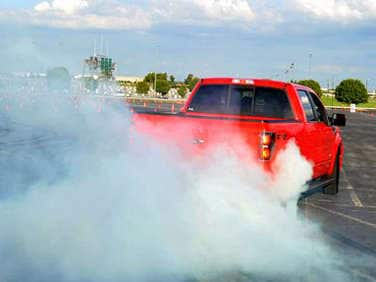Recent Articles
Popular Makes
Body Types
Dangers of Carbon Monoxide Poisoning

If you are exposed to very high levels or low levels over a long time, meaning overnight or longer it can kill you. When a person breathes in the carbon monoxide, it quickly enters the bloodstream where it depletes oxygen from the blood cells. Carbon monoxide poisoning is a particular problem in the long cold winter months when we tend to keep all the doors and windows sealed up tight. An extra danger of this type of poisoning is the fact that the symptoms or early warnings appear to be the same as flu symptoms and many people don't take any notice. These early flu-like symptoms include but may not be limited to: • Headaches • Nausea, stomach ache and vomiting • Dizziness and disorientation, mental fogginess • Muscle weakness • Fatigue , the symptoms worsen to become: • Memory loss • Slurred speech • Loss of consciousness • Death Here is a list to check to see if the problem is carbon monoxide poisoning. • Your symptoms get better when you leave the house or car • If everyone in the car or family is ill at the same time • If there is no sign of a fever When we consider carbon monoxide poisoning there are two areas of concern with CO issues. When a vehicle kicks out exhaust fumes, approximately 5-10 percent of those emissions are carbon monoxide. Different engines will produce different amounts of this deadly gas at different times. If the engine is clean and efficient, the carbon monoxide emission is less. This can be also dependent on the air/fuel ratio. An engine will produce more carbon monoxide: • Before and as it warms up, • When it is idling, • The motor is racing, • It is operating at high speeds, • When it is hauling a heavy load or climbing steep grade. All normal fuels, including diesel and butane, produce carbon monoxide. Sometimes, the inside of a moving vehicle will begin to have high concentrations of carbon monoxide. In studies done by the California Highway Patrol, they found that 30 out of 1,078 vehicles tested proved to have carbon monoxide levels at the height of the driver's face. Each of these 30 vehicles had a defect that permitted carbon monoxide to pass into the vehicle. The types of defects included: • Defective muffler • Leaky tail-pipe • Blow-by • Leaky manifold pipe gasket • Leaky manifold-engine connection • Leaky exhaust pipe The most common of these defects were defective mufflers and tailpipes, with 19 and 17 cases respectively. In the home, if you have the symptoms listed above and the contraindications listed earlier prove true as well, you could easily have a CO problem in the home. Remember, carbon monoxide is a colorless, odorless gas that can be produced by heating systems, obstructed chimneys, poorly vented generators, gas grills, kerosene heaters as well as automotive exhaust. Get a gas appliance technician in immediately to check them over. Your natural gas furnace should be inspected every year and other gas appliances every two years. Under this other category, are water heaters, washers and dryers. A natural gas fireplace requires yearly servicing as well. To keep your car carbon monoxide free, have your trusted mechanic check the exhaust system on your car as part of the annual checkup. It takes only a small leak in the exhaust system to create a build up of CO inside the car. Don't leave your vehicle running in your garage with the door shut. It takes very little time for carbon monoxide to build up in a closed space. Make sure you keep a door open at all times. Be particularly careful if the garage is attached to the house. The carbon monoxide can leak into the house.